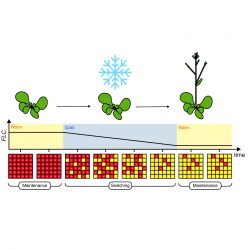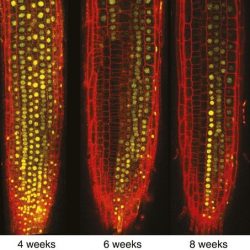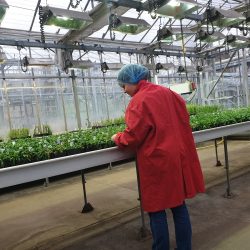Epigenetic switching

As plants experience the prolonged cold of winter the floral repressor gene FLOWERING LOCUS C (FLC) is progressively silenced.
This silencing is epigenetically stable enabling floral activation in spring.
The progressive FLC silencing at the whole plant level represents a cis-based, digital switching mechanism at each FLC copy in the nucleus. FLC exists in mutually exclusive ON and OFF epigenetic states and is switched from one to another by prolonged cold.
This process occurs in a step wise manner. First, transcription is repressed in a process involving cold up-regulation of antisense transcription. Next, cold-induced recruitment of a Polycomb Repressive Complex 2 to a specific internal nucleation site switches the gene to a metastable silenced state. Then, after plants have returned to warm, there is spreading of the Polycomb complex across the body of the gene to give stable epigenetic silencing.
The Dean lab are currently focusing on the molecular events behind what constitutes the epigenetic switch.
The hypothesis is that the digital switch involves a conformationally-induced oligomerization of a Polycomb complex at the nucleation site. This generates a Polycomb complex that can be robustly distributed onto both daughter strands during DNA replication.
This work is done closely with the group of Professor Martin Howard in Computational and Systems Biology at the John Innes Centre in order to combine mathematical modelling with experimentation to gain a full understanding of the complex biological switching mechanism
This is an interdisciplinary effort combining molecular genetics/biology and computational biology with structural biology, achieved through close working relationships with Dr Mariann Bienz, Dr Elsa Franco Echevarria and Dr Marc Fiedler (MRC Laboratory of Molecular Biology, Cambridge) as well as the Howard group.



